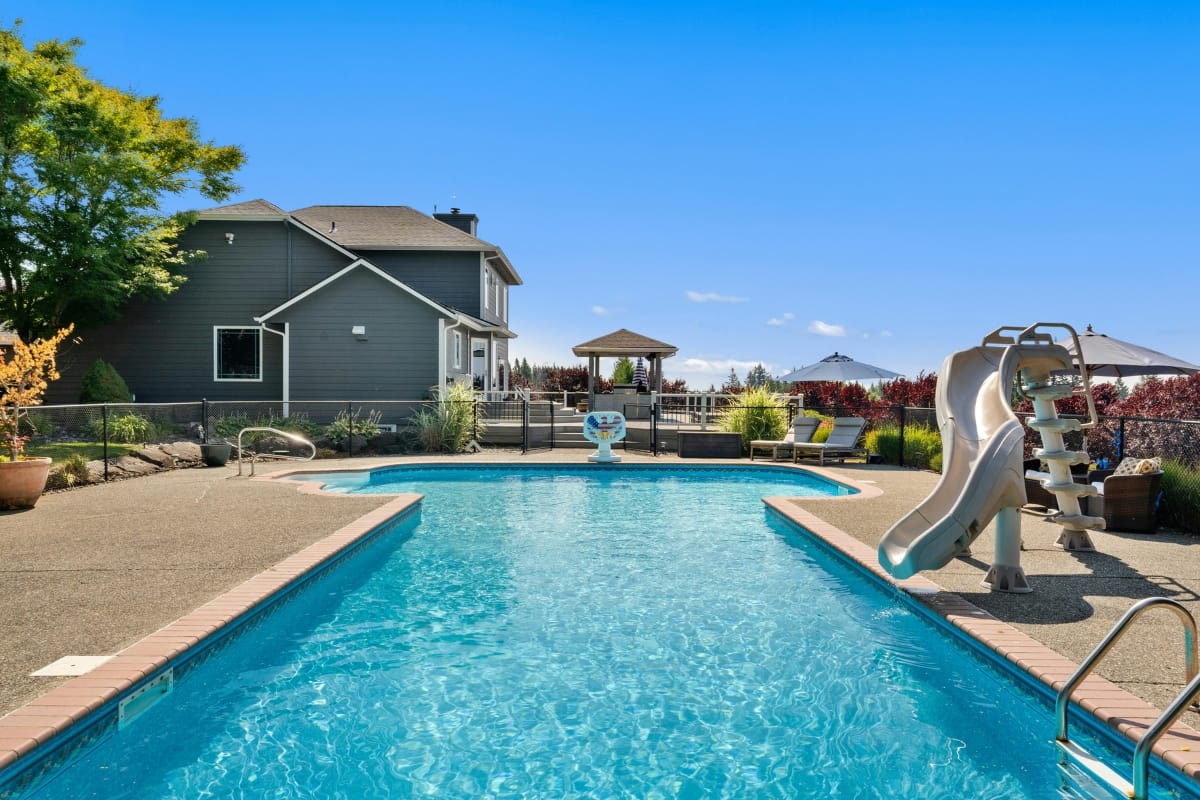Keeping your pool crystal clear all summer long in Canton doesn’t have to be a challenge—it just takes consistency and the right know-how. With Georgia’s warm, humid climate, pools can quickly turn from inviting to murky without proper care. Whether you’re hosting weekend gatherings or enjoying quiet swims, clean water and a well-maintained system make all the difference. In this guide, we’ll walk you through essential pool maintenance tips to help you prevent algae growth, balance chemicals, and keep your water sparkling throughout the season. Dive in and learn how to make the most of your pool all summer.
Pool Maintenance Tips: Keep Your Canton Pool Sparkling All Summer
Importance of Regular Pool Maintenance
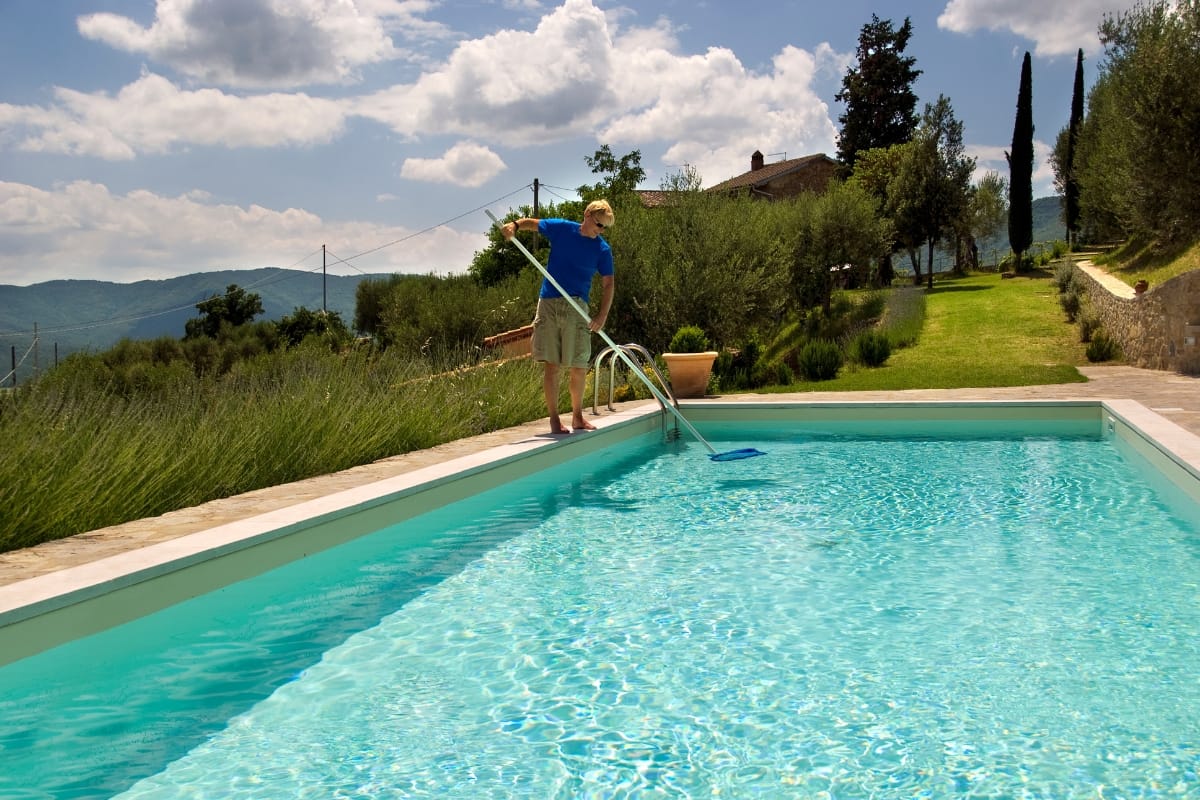
Taking care of your pool regularly is the best way to keep it safe, clean, and ready for use all summer. Skipping routine maintenance can lead to problems like murky water, algae growth, and broken equipment—issues that can be both unpleasant and expensive to fix. A consistent upkeep schedule helps prevent these problems and keeps your pool in good condition all season.
Checking and adjusting your pool’s water chemistry is one of the most important parts of maintenance. Without the right chemical balance, bacteria and algae can grow quickly, making the water unsafe for swimmers. Testing the pH and chlorine levels a few times a week helps prevent issues before they get out of control. It also protects your pool’s surfaces and equipment from corrosion or scale buildup.
In Kentucky, summer weather brings its own set of challenges. Heat waves can increase evaporation and chemical use, while storms dump leaves, dirt, and pollen into the water. Taking a few simple steps like skimming the surface daily, brushing the walls and floor, and emptying skimmer baskets goes a long way toward keeping things under control. Using a pool cover when the pool is not in use can also help reduce the amount of debris that gets in.
It’s also important to keep an eye on your filter and pump. These parts work hard to keep the water clean and moving. If they’re clogged or worn out, your pool can quickly become dirty, even if your water chemistry is on point. Cleaning or replacing filters as recommended by the manufacturer keeps everything running smoothly and prevents long-term damage.
Staying on top of regular maintenance means fewer surprises and more time enjoying the water. It reduces the chances of needing emergency service and helps you avoid large repair bills down the road. When the pool is clean and well-kept, it’s a more inviting space for you, your family, and your guests.
In short, a little effort each week goes a long way. With a consistent routine, you’ll keep your pool looking great and running properly all summer, even when the Kentucky heat kicks in.
Understanding Pool Chemistry for Crystal Clear Water
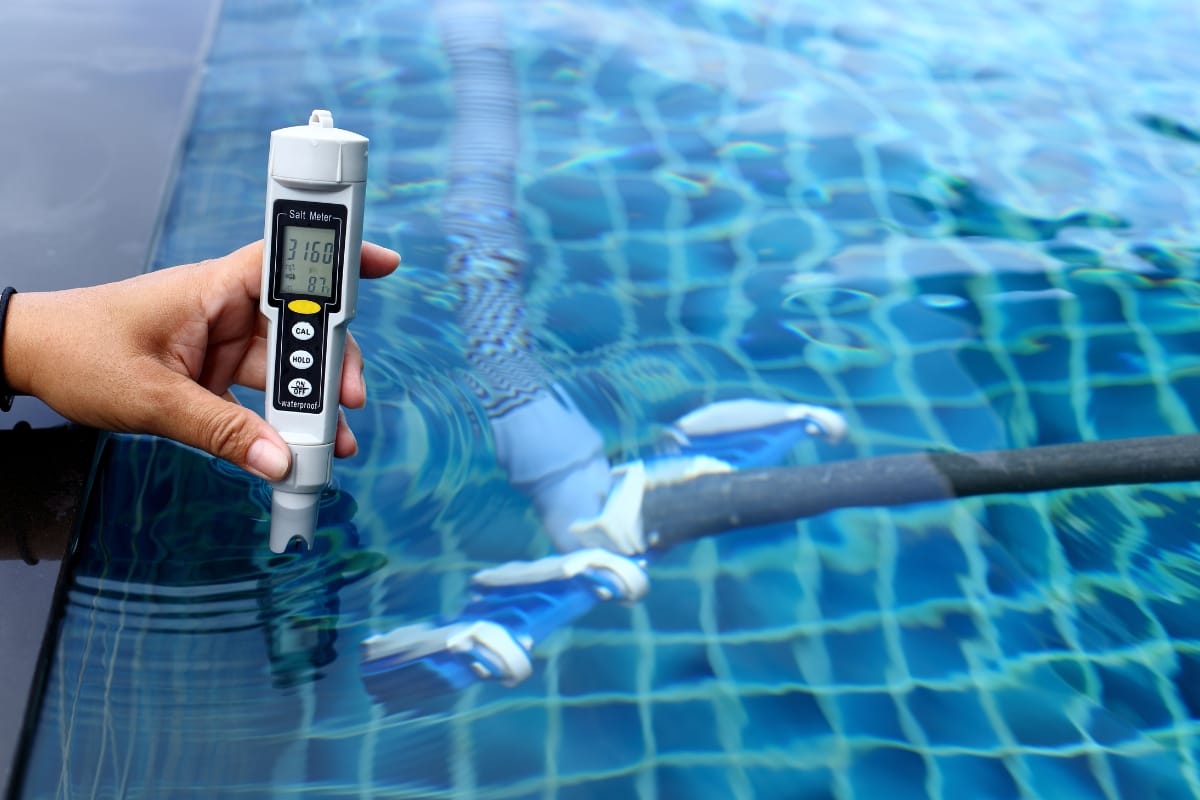
If your pool looks cloudy or feels irritating on the skin, chances are the water chemistry is off. Keeping your pool clean and safe starts with understanding a few basic elements—pH, alkalinity, and sanitizer levels. You don’t have to be a chemist to get this right. With a little practice and consistency, anyone can manage it.
The pH level tells you how acidic or basic your water is. Too low, and it can corrode pool surfaces and equipment. Too high, and it might cause scale buildup and make chlorine less effective. Aim for a range between 7.4 and 7.6 to stay in the safe zone. Total alkalinity helps stabilize the pH. Keeping it between 80 and 120 parts per million makes it easier to maintain that balance.
Chlorine or other sanitizers play a major role in keeping your water free from harmful bacteria and algae. If levels drop too low, you risk cloudy water or green patches along the walls. On the flip side, over-chlorination can irritate swimmers’ skin and eyes. Most pools do best when chlorine levels are between 1 and 3 parts per million.
One of the best ways to stay on top of water chemistry is to use a test kit or test strips two or three times a week. Write down the results so you can spot trends or recurring problems. It doesn’t have to be complicated—just a simple notebook or a tracking app will do. This regular check-in helps you catch small imbalances before they turn into big problems like algae blooms or damaged pool equipment.
It also helps to test after heavy use, rainfall, or adding fresh water, since these can throw off the chemical levels. If something seems off, adjust slowly and retest before adding more. This prevents overcorrection, which is a common mistake.
By building a habit of regular testing and adjusting, you’ll avoid most of the headaches that come with pool ownership. Balanced water looks better, feels better, and is easier on your pool system in the long run. Keep it simple and stay consistent—your pool will thank you.
Daily Pool Maintenance Routine
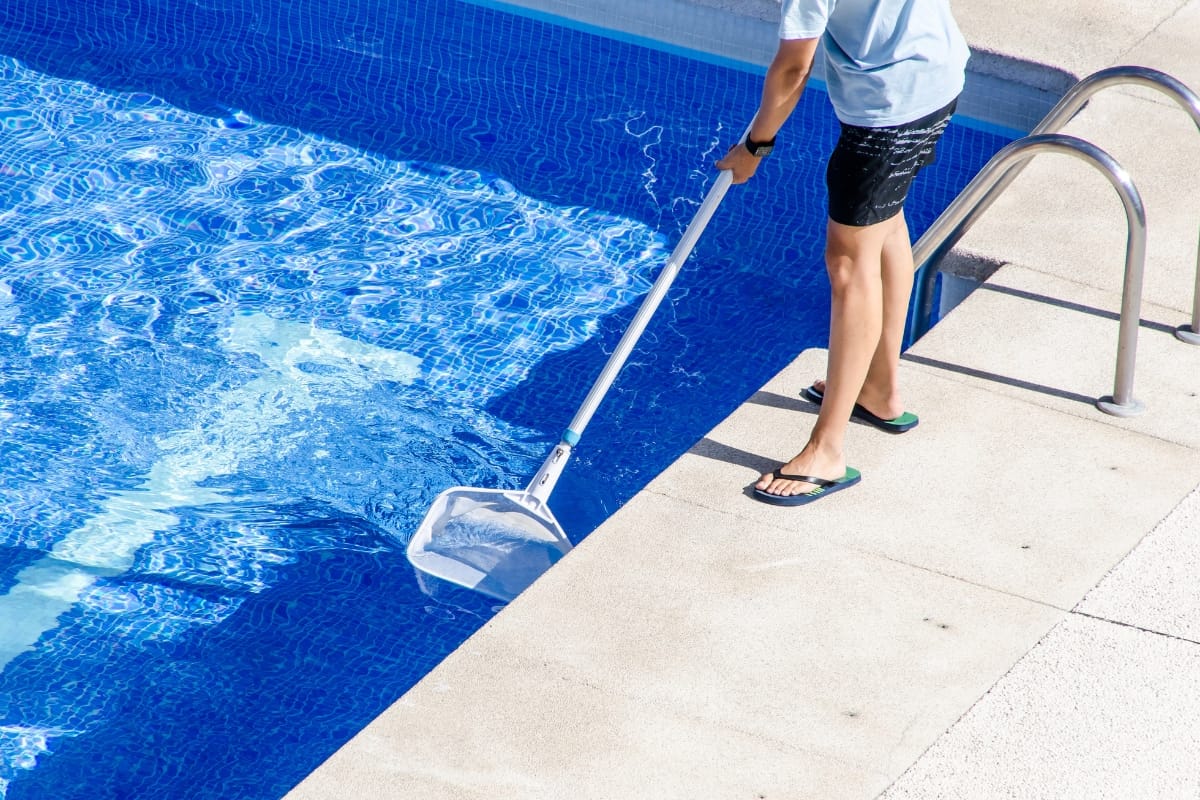
Keeping your pool in good shape doesn’t have to take long, but staying consistent makes all the difference. A quick daily routine helps prevent small issues from turning into expensive repairs.
Start each morning by skimming the surface of the water. Use a leaf net or skimmer to remove leaves, bugs, pollen, or any other debris that may have collected overnight. This step only takes a few minutes, but it goes a long way in keeping the water clear. If debris sits too long, it can sink to the bottom, break down, and affect water quality.
After skimming, check the water level. Normal evaporation or splash-out from swimmers can cause the level to drop. If it dips too low, your pump could start pulling in air instead of water, which puts strain on the system. Ideally, the water should sit about halfway up the skimmer opening. If it’s low, add water slowly with a garden hose until it’s back in range.
Next, take a quick look at your pool equipment. Make sure the pump is running smoothly and that the filter pressure gauge is within the normal operating range. A sudden spike or drop in pressure could signal a clog or the need for backwashing. Also, glance around for leaks, unusual noises, or anything that seems out of place.
If you have an automatic cleaner, check that it’s moving freely. If not, clear any blockages or inspect the hose for tangles. For pools without automatic systems, brushing the steps and walls every couple of days will help prevent algae buildup, especially in shaded areas.
It’s also a good idea to test the water two or three times a week, but if you notice any signs of cloudy water, irritation, or strong odors, test it right away. Addressing chemical imbalances early saves time and money later.
A steady daily routine doesn’t need to be time-consuming. Ten to fifteen minutes of basic maintenance keeps the water inviting and extends the life of your pool equipment. When done regularly, these small tasks help avoid big surprises and keep your pool ready for use all season long.
Weekly Pool Cleaning Tasks
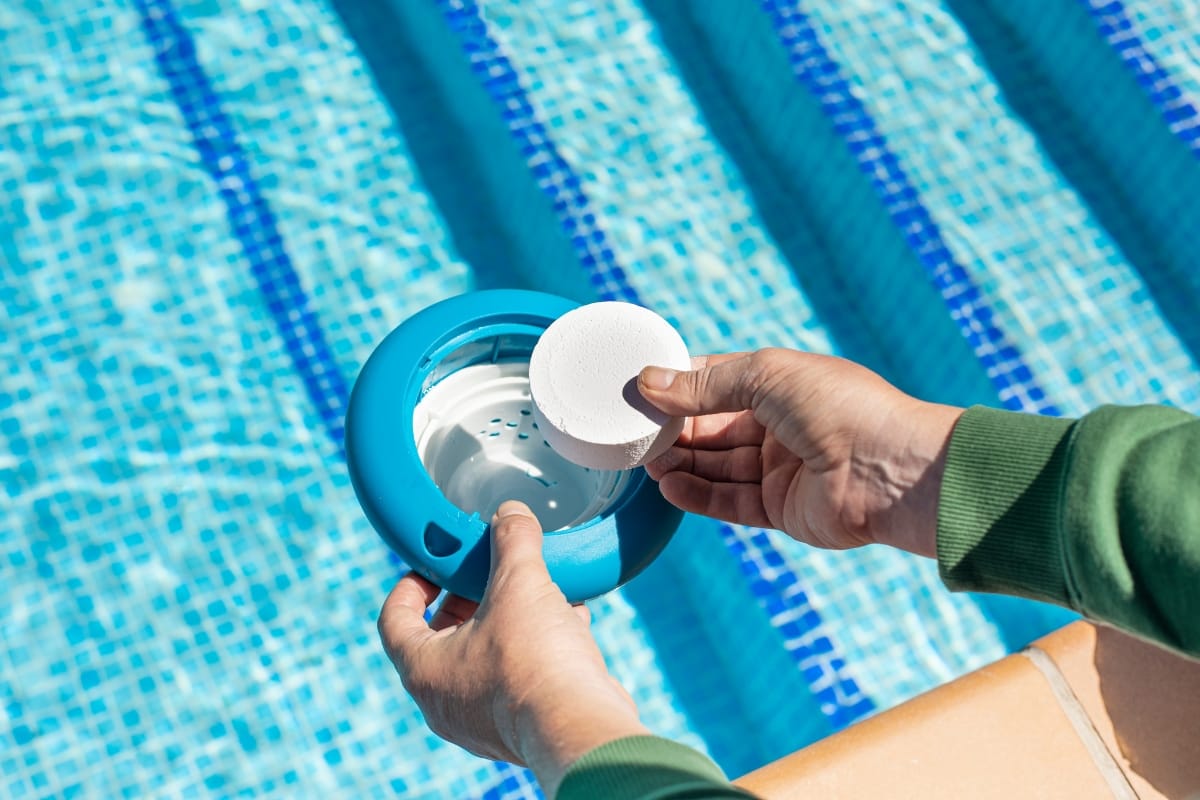
Daily upkeep helps keep your pool in good shape, but weekly maintenance is where you tackle the deeper cleaning that keeps everything running smoothly long-term.
Begin by checking your filter. Depending on your system, this means either backwashing a sand or DE filter or rinsing out cartridge elements. A clogged filter restricts water flow and reduces the effectiveness of your pool’s circulation system. Stick to the manufacturer’s instructions for cleaning frequency, and keep an eye on the pressure gauge for signs the filter is working harder than it should.
Next, focus on the pool floor and walls. Use a pool vacuum or an automatic cleaner to remove settled debris and dirt. If you’re using a manual vacuum, take your time to move slowly and methodically to avoid stirring up debris. Don’t forget corners, steps, and other low-flow areas, where buildup tends to collect. Even if the pool looks clean, regular vacuuming prevents algae from taking hold and helps maintain balanced water chemistry.
Brushing the pool walls should also be part of your weekly routine. Use a brush suited to your pool’s surface—nylon for vinyl or fiberglass, stainless steel for plaster or concrete. This helps dislodge biofilm and prevent algae growth, especially in shaded spots or along waterlines.
Check chemical levels while you’re at it. Weekly testing gives you a chance to catch shifts in pH, chlorine, or alkalinity before they become serious problems. If needed, adjust the levels using the appropriate treatments. Many pool owners also add a weekly dose of algaecide or shock treatment to keep the water crystal clear and free from contamination.
If your pool has skimmer baskets or a pump basket, clean those out as well. A clogged basket can reduce water flow and put stress on your pump.
By setting aside time each week for this more thorough cleaning, you help prevent issues before they start. This not only keeps your pool water clean and inviting but also protects your equipment from unnecessary wear and tear. A consistent weekly routine goes a long way in making pool ownership less stressful and more enjoyable all season.
Skimming and Vacuuming Techniques
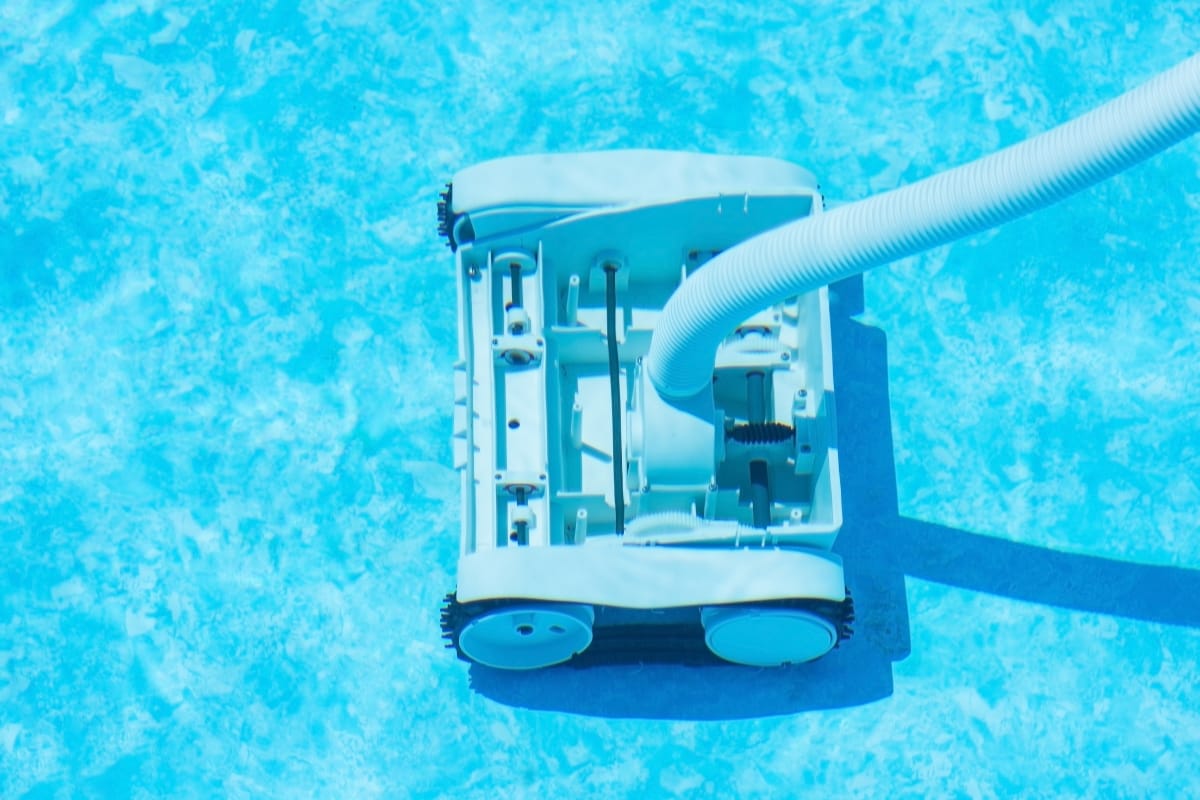
Keeping your pool clean starts with mastering two basic tasks: skimming and vacuuming. These are the go-to methods for removing physical debris and keeping the water looking clear and inviting.
Skimming should be done daily, especially during peak swim season. Use a fine-mesh net attached to a telescopic pole to scoop leaves, bugs, and any floating debris off the surface. It only takes a few minutes and helps prevent organic material from sinking and breaking down at the bottom of the pool, which can cause cloudy water or contribute to algae growth.
Vacuuming, on the other hand, dives deeper. This process targets dirt, sand, and algae that settle on the pool floor and in hard-to-reach corners. Whether you’re using a manual vacuum or an automatic cleaner, the key is to be thorough and consistent. If you’re vacuuming manually, move slowly in straight, overlapping lines—similar to mowing a lawn. Going too fast will stir up debris before it can be sucked up.
For best results, run your pool pump on high speed while vacuuming. This boosts suction and helps the system filter out fine particles more effectively. If your vacuum connects to the skimmer, be sure the pump basket and skimmer basket are both clean beforehand to allow proper water flow. Always keep an eye on the pressure gauge during this process. If it rises significantly, it may be time to backwash your filter.
In pools with a lot of fine sediment or after a storm, you may need to vacuum multiple times during the week. Also consider brushing down the walls before vacuuming to loosen any stuck-on grime and allow the vacuum to capture it.
Adding these simple skimming and vacuuming techniques to your regular maintenance routine can make a big difference in your pool’s appearance and water quality. It not only improves clarity but also helps maintain proper chemical balance by removing debris that could otherwise throw it off. A little daily effort combined with weekly deep cleaning goes a long way toward keeping your pool swim-ready all season.
Brushing and Scrubbing the Pool Surfaces
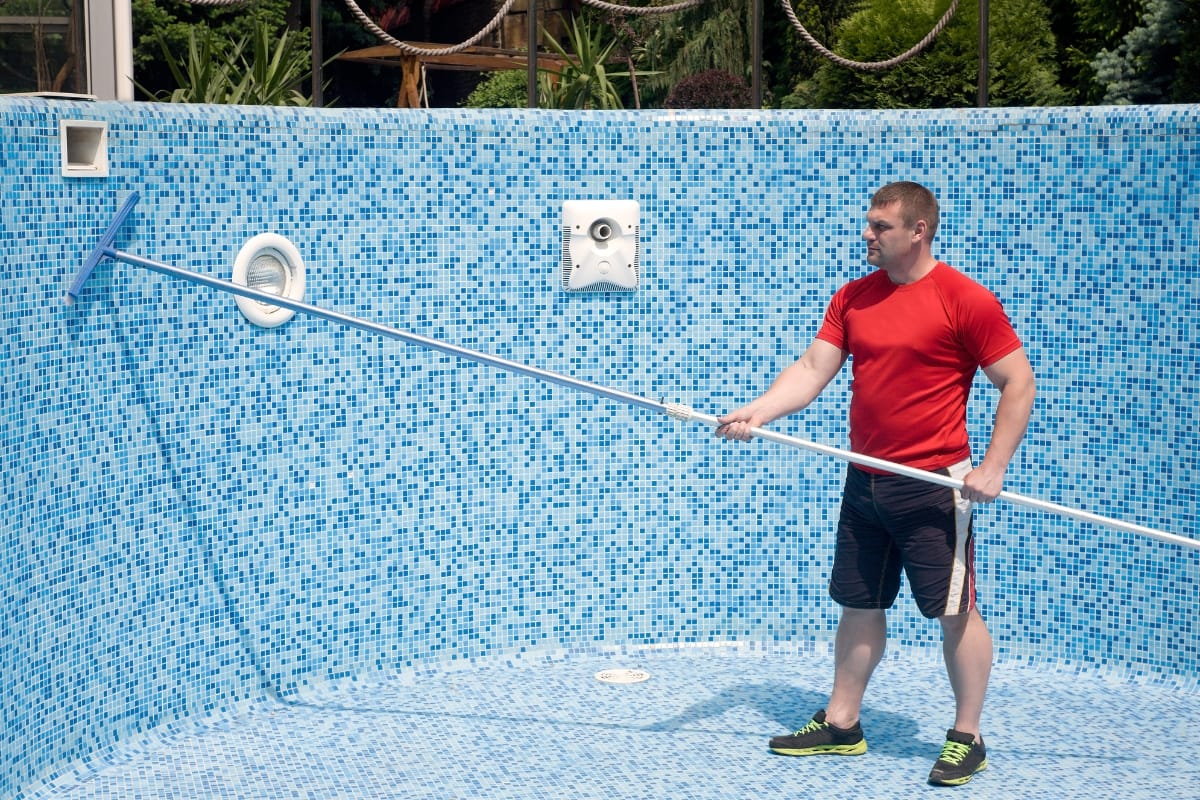
Keeping your pool clean is not just about skimming and vacuuming. Regular brushing is just as important, and it plays a big role in preventing algae growth and buildup along pool surfaces. It may seem like an extra chore, but a few minutes of brushing each week can save you time and money in the long run.
Use the right type of brush for your pool surface. For vinyl and fiberglass pools, a soft nylon brush works best to avoid scratching the finish. If you have a concrete or plaster pool, use a brush with stainless steel bristles to effectively scrub away stubborn grime. Avoid using a stiff brush on delicate surfaces, as it could cause damage over time.
You should aim to brush the entire pool once a week. Start with the walls, then move to the floor, taking care to overlap your strokes for even coverage. It’s best to brush in the direction of your pool’s circulation pattern to help loosen particles and push them toward the filter system. Don’t forget to scrub the waterline, where oils and sunscreen tend to build up.
Focus on areas that don’t get strong water circulation, like corners, steps, ledges, and around ladders or pool lights. These spots are more likely to develop algae or collect debris. Even if your water looks clear, algae can start to form in these hidden zones, especially in warm weather.
For pools with visible algae spots, brushing becomes even more critical. Regular scrubbing helps break up biofilm layers that protect algae and bacteria, making your sanitizer more effective. If you notice algae returning frequently, it may be time to increase brushing to two or three times per week until the issue is under control.
Brushing also helps extend the life of your pool finish. Removing grime before it hardens or stains protects your surfaces and keeps the pool looking well-maintained. Combined with vacuuming, proper filtration, and balanced water chemistry, regular brushing is one of the easiest ways to maintain a clean and healthy swimming environment all season long.
Monitoring and Adjusting Water Levels
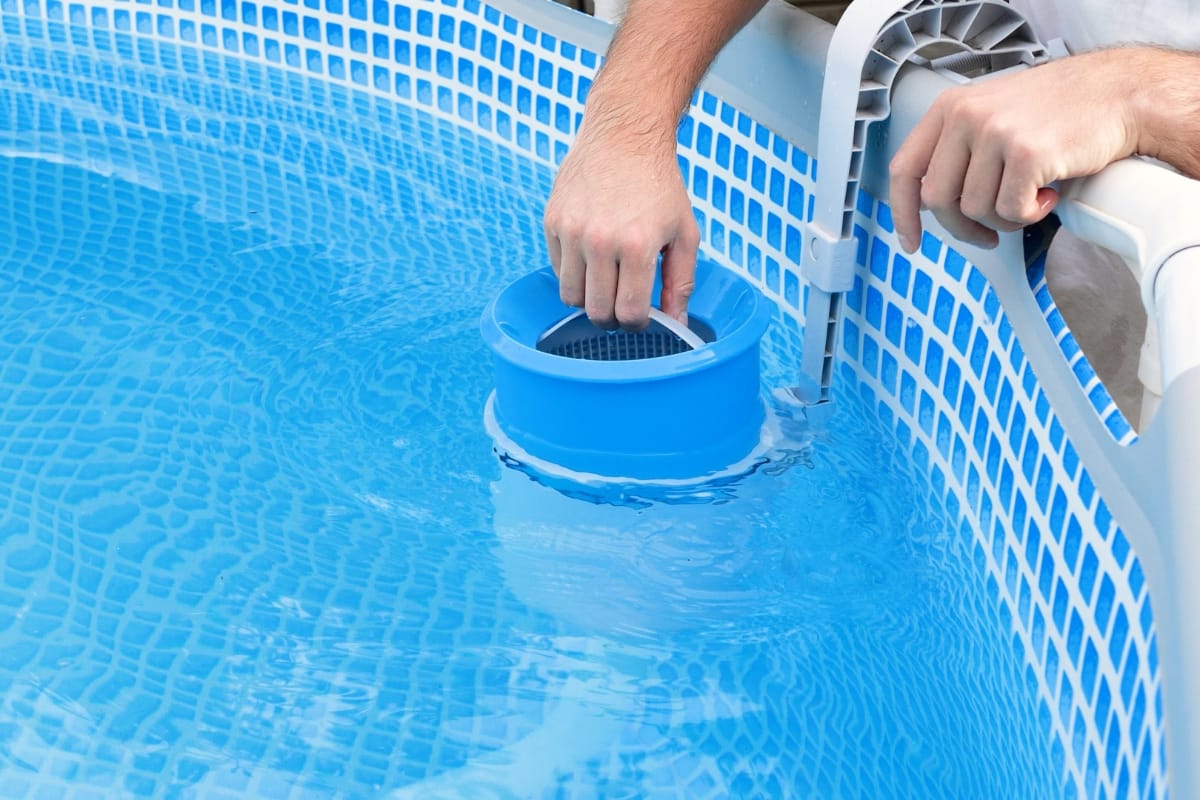
Keeping an eye on your pool’s water level might seem like a minor detail, but it plays a big role in keeping your pool system running properly. When the water level is too low, your pool pump may suck in air, which can damage the motor or cause it to lose prime. If the water is too high, the skimmer can’t do its job effectively, and debris like leaves and bugs won’t get pulled into the filtration system.
Ideally, the water should sit about halfway up the opening of your skimmer. This allows for proper circulation and ensures the skimmer can grab surface debris without drawing in air. During the summer months or periods of heavy use, check your water levels every day. Evaporation, splashing, and backwashing all cause the level to drop more quickly than you might expect.
If your pool is running low, topping it off with a garden hose usually does the trick. Just be sure to monitor the fill-up so it doesn’t overflow. On the flip side, if heavy rain causes the water to rise too high, you may need to drain a bit using your pool pump’s waste setting or a submersible pump. Be sure to follow local drainage regulations when removing excess water.
Also consider installing an automatic water leveler. These small devices connect to your pool’s plumbing and refill the water when it drops below a set point. While not essential, they can be useful if you’re away often or simply want one less thing to worry about.
Incorporating regular water level checks into your pool care routine helps prevent equipment issues and keeps your water looking clean and inviting. It takes just a minute to look, and that small habit can save you time, money, and frustration down the road. Combined with good filtration and proper chemical balance, maintaining the right water level helps keep your entire pool system running smoothly all season long.
Maintaining Pool Equipment for Optimal Performance
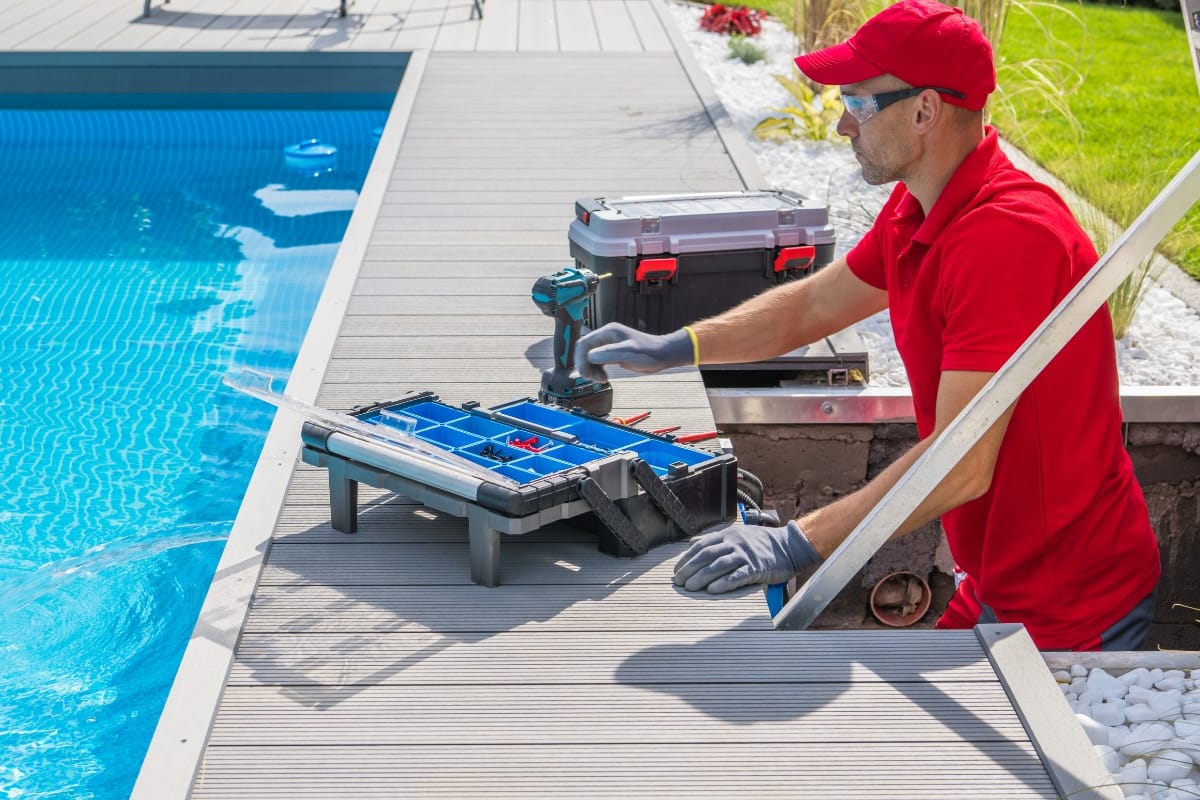
Your pool equipment plays a big role in keeping the water clean, safe, and ready to use. The pump, filter, heater, and related systems work hard every day, so regular maintenance is important if you want to avoid costly breakdowns and keep everything running smoothly.
Start with a basic visual check. Look for signs of wear like cracks, loose fittings, or any water leaks around valves and seals. If your pump sounds louder than usual or starts vibrating, that’s a red flag. Small problems caught early are usually easier and cheaper to fix than waiting until something fails completely.
Check and clean your filter regularly. If you have a cartridge filter, rinse it off when the pressure rises about 8 to 10 psi above the normal reading. For sand or DE filters, backwashing helps clear out debris and restore flow. Don’t forget to inspect the pressure gauge and clean out the pump basket too.
O-rings should be kept clean and lightly lubricated with pool-safe lubricant to prevent cracks and leaks. Skimmer baskets and automatic cleaner hoses should be cleared out regularly to keep water flowing properly.
Once a season, it’s smart to call in a pool professional for a more thorough inspection, especially if you have a heater, automation systems, or saltwater generator. They can check wiring, calibrate sensors, and verify that everything is operating within safe limits. Regular service also extends the life of your equipment and ensures your pool stays efficient and energy-friendly.
If your pool includes timers or remote control systems, test them occasionally to make sure they’re still working as expected. Batteries should be replaced when needed, and software may need updates for smart systems.
Taking care of your pool equipment doesn’t require a lot of time, but it does require consistency. A few minutes every week can make a big difference in performance and prevent expensive repairs later on. With routine upkeep and occasional help from a pro, your pool equipment will stay in good shape and continue doing its job all season long.
Dealing with Common Pool Problems
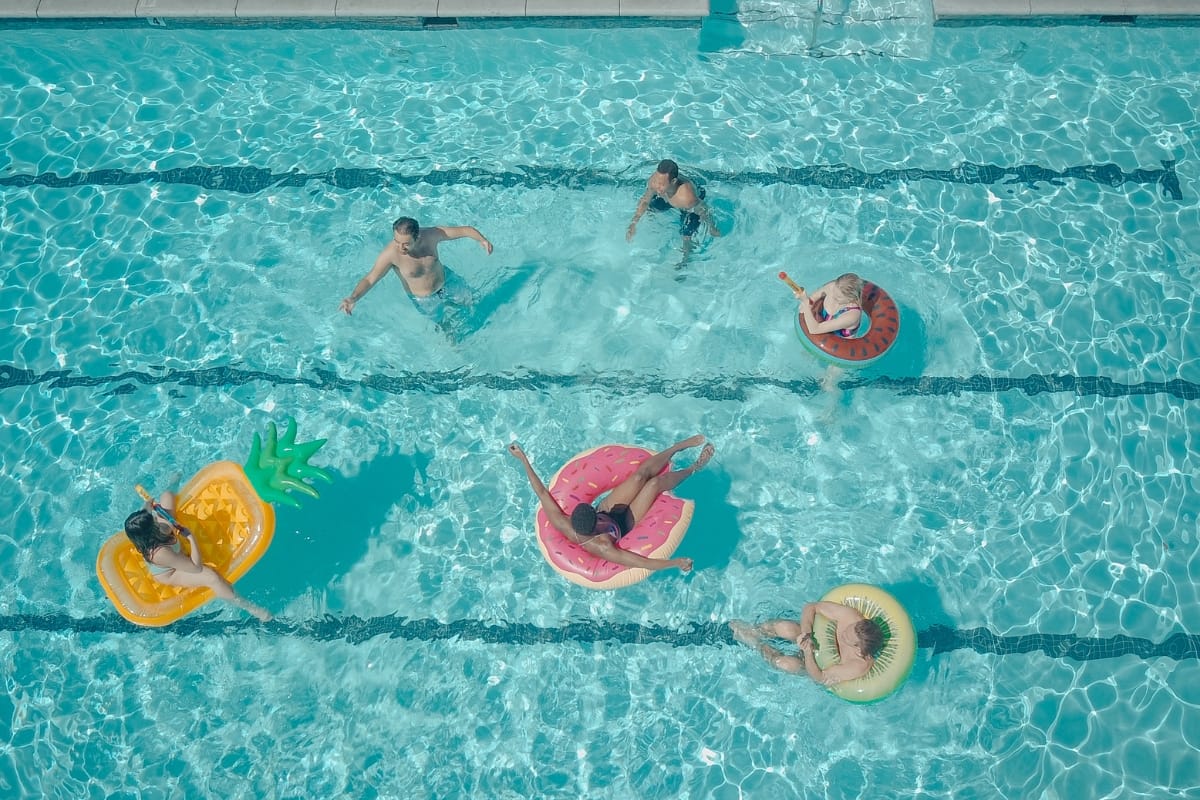
Even when you’re keeping up with regular maintenance, pool problems can still pop up from time to time. The good news is that most issues can be fixed quickly if you know what to look for and act fast.
One of the most common problems is algae. If your pool water starts turning green, you’re likely dealing with an algae bloom. The solution is to shock the pool with a large dose of chlorine. Make sure the pump is running, then brush the walls and floor thoroughly to break up the algae and help the chlorine do its job. Keep the filter running for 24 to 48 hours, and check the chlorine levels regularly.
Cloudy water is another frequent complaint. This usually means something is off in your water chemistry. Start by testing your pH, chlorine, and alkalinity levels. Adjust them as needed using standard pool chemicals. Also check your filter. A dirty or clogged filter can reduce water clarity, even if the chemicals are balanced.
Foam on the water’s surface can be caused by things like leftover sunscreen, body oils, or too much algaecide. It might look harmless, but it’s usually a sign that your water has a buildup of organic material. A pool enzyme or clarifier can help break it down. You can also try using a phosphate remover to clear out nutrients that feed algae growth.
Some issues, like low water circulation or strange odors, can be linked to mechanical problems. Make sure the pump is running smoothly and the skimmer baskets are clean. If the filter pressure seems off, backwash it or clean the cartridge.
To stay ahead of these problems, it helps to keep a basic troubleshooting guide handy. Having a small log where you jot down water test results, chemical adjustments, and filter cleanings can also give you a better picture of what’s going on.
By catching problems early and knowing how to respond, you can avoid bigger headaches down the line. Most pool issues are manageable with a little knowledge, a few tools, and a consistent maintenance routine.
Conclusion: Enjoy a Summer of Clear Pool Bliss
Achieving and maintaining a crystal-clear pool in Canton is within reach when you embrace consistent care and follow proven pool maintenance tips. From daily skimming and chemical checks to weekly vacuuming and equipment inspections, each step contributes to a safer, more inviting swimming environment. By incorporating these strategies into your routine, you’ll spend less time troubleshooting and more time enjoying refreshing dips with family and friends. Here’s to a summer filled with sun, laughter, and the perfect pool experience!
Keeping your pool crystal clear all summer in Canton doesn’t have to be a chore—regular skimming, balanced water chemistry, and routine equipment checks go a long way toward sparkling results. For professional maintenance, expert advice, and top-quality service, trust Clear Water Pools Atlanta to keep your pool in peak condition. Call us at 770-406-8638 or request a pool estimate through our site form and dive into worry-free summer days!

